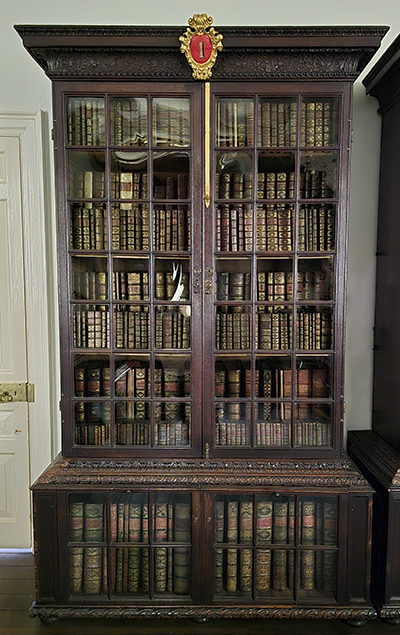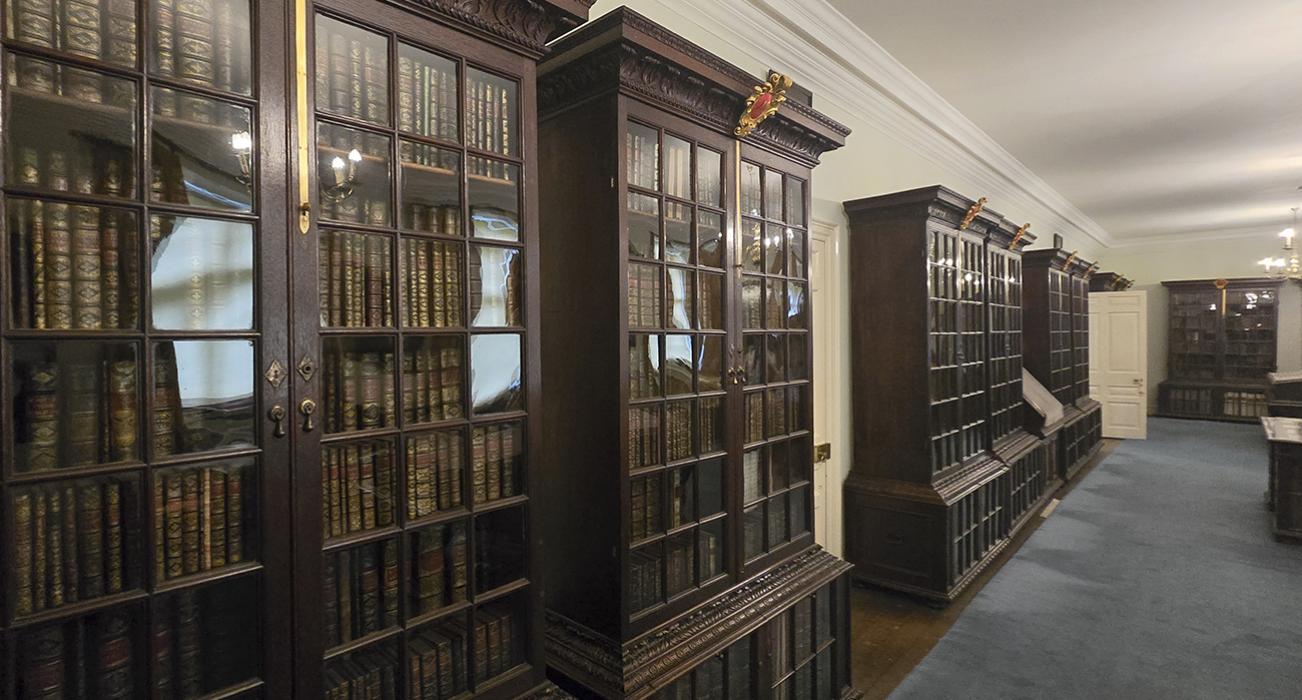Preserve a Press
In his 1666 diary, Samuel Pepys recorded that he had lost the use of his books, he had roughly 250 piled in his study and was increasingly frustrated about accessing or damaging them. His solution, he called for ‘Simpson the Joiner’, from the Naval dockyards to help him design ‘a cupboard for books’ which he called Presses.
The First Press
 Press Number One contains some remarkable volumes. Not the 250 books it was originally built for by Simpson, the Joiner, as Pepys arranged his collection by size so each press has a mixture of books from small to large.
Press Number One contains some remarkable volumes. Not the 250 books it was originally built for by Simpson, the Joiner, as Pepys arranged his collection by size so each press has a mixture of books from small to large.
Highlights of this Press include the two Wycliffite Bibles, among the earliest translations into English of the New Testament with superb bindings; and a recipe book from the fifteenth century handwritten on paper, an expensive material at a time when none was made in Britain.
Press Number Two
In 1667 Pepys suffered a familiar experience for all of us who order a bookcase. When his first bookcase arrived, he immediately found that he ran out of space, so he commissioned another, almost identical to the first but with height adjustable shelves.
Perhaps the most read and researched items in the Press are the six beautiful volumes of Ballads. The Pepys Library holds the most substantial collection of seventeenth-century ballads in the world, around 1800 items.
Broadside Ballads were printed on large sheets of paper and handed from person to person. They contain popular songs about recent events including hangings, royal weddings, battles and many other noteworthy news of the time. Pepys later divided these into sections for Love Requited and Love Unrequited.
Developing a Collection
As he began to develop his collection, Pepys became close friends with John Evelyn. A small but important volume in the collection called Instructions Concerning the Erecting of a Library.
Originally written by Gabriel Naudé the French Royal Librarian it had been translated into English by Evelyn and given to Pepys as a gift. It contains the inscription ‘Be pleas’d to accept this trifle from your humble servant, E.’
Pepys followed much of the advice in this book when building his own collection. It covers the care and conservation of books as well as guidance on the evolution of a library collection, but Pepys did not adhere to Evelyn’s every word, funnily it is noted by Evelyn "whatever you do, do not arrange your books according to size".
Preserving the Presses
The twelve Pepys Presses are as historically significant as the collections of books, manuscripts, documents and prints they have protected for 300 years. Thus, an important part of the Pepys Restoration Project will be the preservation of the Presses for future generations. This requires the work of specialist historic furniture conservers and with your help and support, we can protect Pepys' library collection for another 300 years!
If you would like to support a Press or receive more information about the collection of books housed in each Press, don't hesitate to get in touch with the Alumni and Development Office.
Support the Pepys Restoration Project
The College will be funding this significant work from its reserves, but we are looking to you, our Members and Friends, to cover half of the £5 million cost to restore this important heritage building and the Pepys Library for posterity.
Every gift to the Pepys Restoration Project will make a huge difference.
Make a Gift (£) Make a Gift ($)